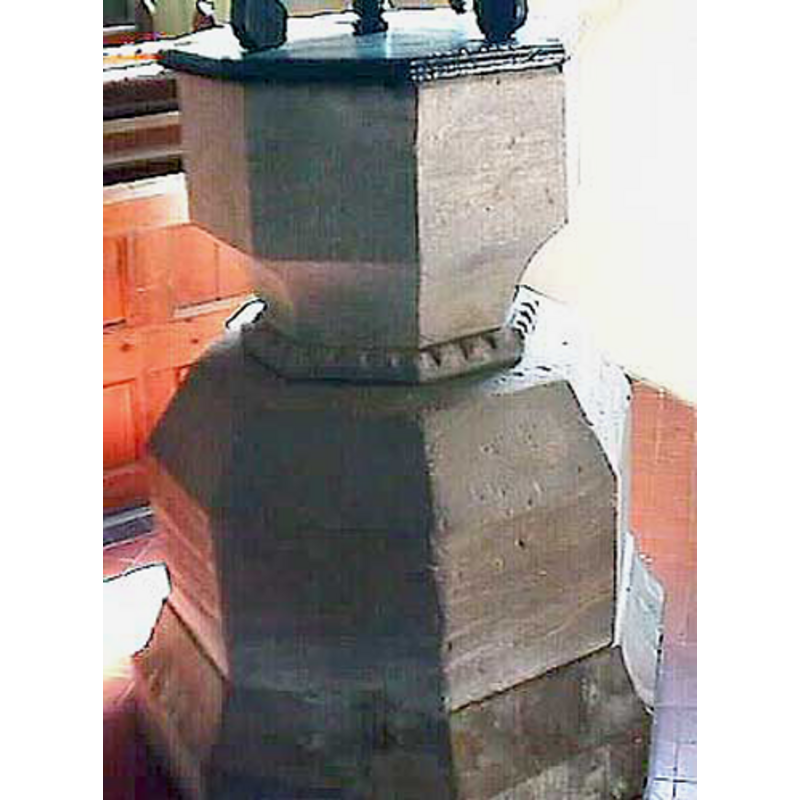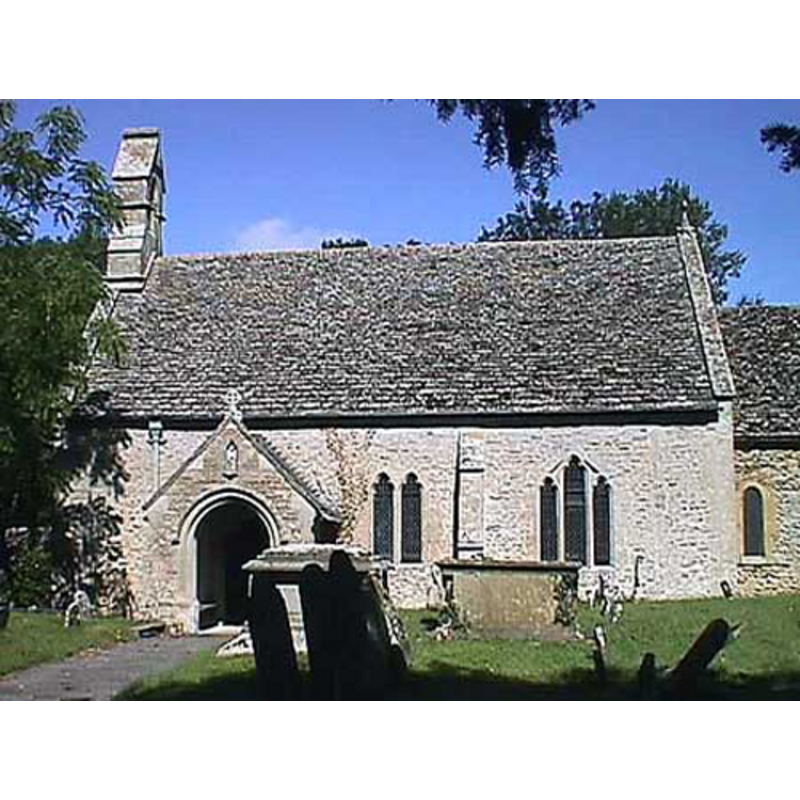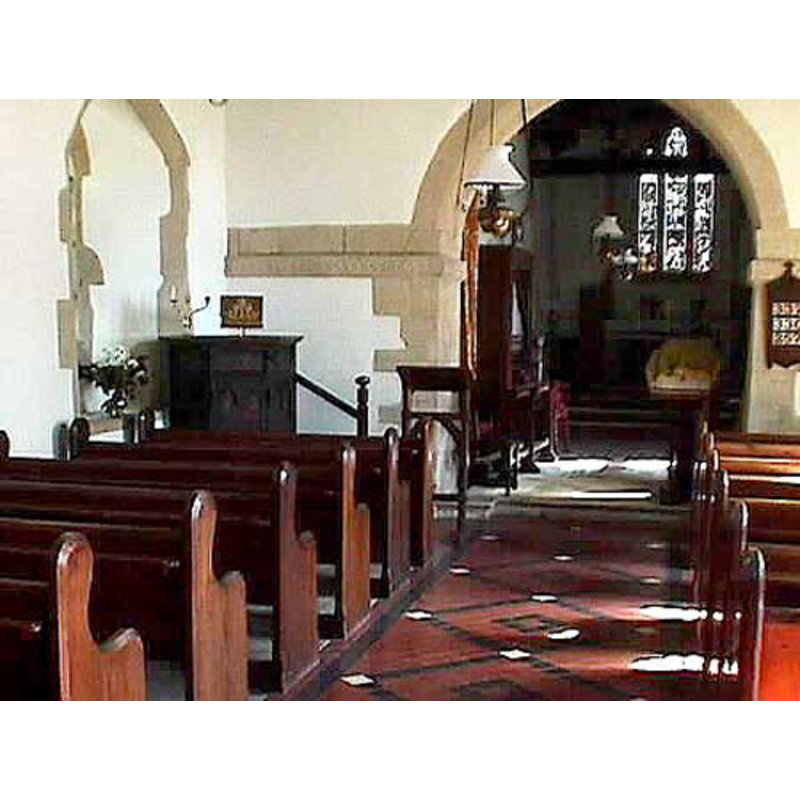Eaton Hastings / Eton / Eton Hastings / Etone / Water Eaton / Water Eton / Water Hastynges

Image copyright © John Wilkes, 2007
Standing permission
Results: 6 records
view of basin
view of church exterior - south view
view of church interior - nave - looking east
view of font
view of font
INFORMATION
FontID: 01294EAT
Object Type: Baptismal Font1
Church/Chapel: Church of St. Michael and All Angels
Church Patron Saints: St. Michael & All Angels
Church Location: Eaton Hastings, Oxfordshire, SN7 8DY
Country Name: England
Location: Oxfordshire, South East
Directions to Site: Located off (N) the A417, on the south banks of the Thames, 3 km NW of Faringdon
Ecclesiastic Region: Diocese of Oxford [formerly in the Diocese of Salisbury]
Historical Region: Hundred of Wyfold [in Domesday] -- formerly in Berkshire -- Hundred of Shrivenham
Font Location in Church: Inside the church, at the W end of the nave, S side
Century and Period: 12th - 13th century, Late Norman / Early English?
Credit and Acknowledgements: We are grateful to John Wilkes, of www.allthecotswolds.com, for his photographs of church and font
Font Notes:
Click to view
There is an entry for Eaton [Hastings] [variant spelling] in the Domesday survey [http://opendomesday.org/place/SU2698/eaton-hastings/] [accessed 9 June 2015], but it mentions neither cleric nor church in it. Murray (1882) reports "a massive Norm[an] font" in this church. Listed in Cox & Harvey (1907) as a baptismal font of the Early English period. Described in Fred S. Thacker's 'The Stripling Thames' (1909) [http://thames.me.uk/0TST/t00380.htm] [accessed 25 January 2009]: "It endured restoration in 1874, and contains nothing that leaps very suddenly to the eye, unless perhaps its ancient font with the enormously massive plinth". The Victoria County History (Berkshire. Vol. 4, 1924) notes: "The oldest part of the building is the north wall of the nave, which dates from the end of the 11th century, the north doorway and a round-headed window high up in the wall being of this period. [...] The font is ancient and consists of a plain octagonal stone bowl on a high double-chamfered base with embattled moulding. It has a plain 17th-century wooden cover." Described and illustrated in the CRSBI (2015) as a basin of the 12th century: "At W end of nave inside S door. Octagonal basin with deep chamfer below and an octagonal lower lip carved with a row of billet. The basin is carved from a shelly oolitic limestone. It is unlined and sits on a modern chamfered octagonal plinth". The present font is an odd-looking composite of the original plain octagonal basin raised now on a wider and larger octagonal base -said to be modern- that looks like large upturned basin; there is a moulding at the angle where both pieces meet. This lower block must be what Thacker [cf. supra] described in 1909 as "the enormously massive plinth". [NB: we have no information on the font from the 11th-century church here].
COORDINATES
Church Latitude & Longitude Decimal: 51.684653, -1.622423
Church Latitude & Longitude DMS: 51° 41′ 4.75″ N, 1° 37′ 20.72″ W
UTM: 30U 595232 5726864
MEDIUM AND MEASUREMENTS
Material: stone, limestone [basin only]
Font Shape: octagonal (mounted)
Basin Interior Shape: round
Basin Exterior Shape: octagonal
Drainage Notes: not lined
Diameter (inside rim): 44 cm*
Diameter (includes rim): 61 cm*
Basin Total Height: 46 cm*
Notes on Measurements: * CRSBI (2015)
LID INFORMATION
Date: 17th-century?
Material: wood, oak?
Apparatus: no
Notes: flat octagonal platform with raised scrolls
REFERENCES
Victoria County History [online], University of London, 1993-. Accessed: 2011-11-23 00:00:00. URL: https://www.british-history.ac.uk.
Corpus of Romanesque Sculpture in Britain and Ireland, The Corpus of Romanesque Sculpture in Britain and Ireland, The Corpus of Romanesque Sculpture in Britain and Ireland. Accessed: 2009-01-25 00:00:00. URL: http://www.crsbi.ac.uk.
Cox, John Charles, English Church Furniture, New York: E.P. Dutton & Co., 1907
Murray, John [the firm], Handbook for travellers in Berks. Bucks and Oxfordshire, including a [...], London: John Murray, 1882


